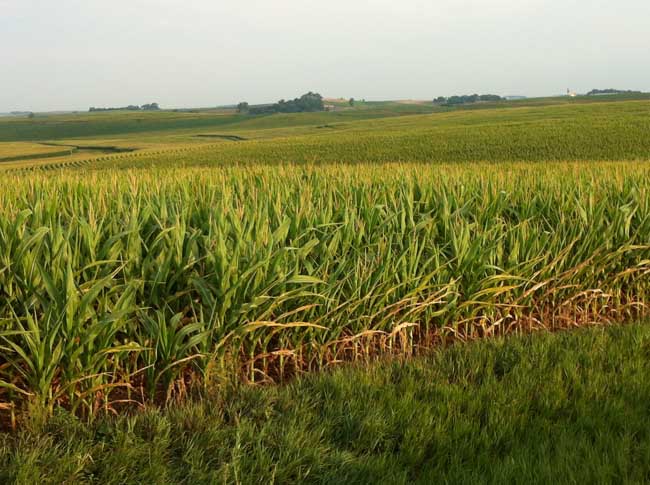July 30, 2012

Drought conditions continue to intensify in areas across the state. According to the July 24, 2012, U.S. Drought Monitor report, the southwest corner of Minnesota is now rated in the "Severe" drought category. The western half and southern counties of the state are rated "Abnormally Dry" or in "Moderate" to "Severe" drought.
In areas hardest hit by the drought, growers are assessing grain yield potential and considering if and when they should harvest drought-stressed corn for forage.
At this time there is still a significant amount of corn for which pollination was successful and plant tissue is green. With adequate moisture, these plants will be able to continue photosynthesizing, and kernel development will continue. Continued drought stress, however, will lead to increased kernel abortion and reduced yield potential.
Yield potential is also reduced where plant tissue has bleached or turned brown prematurely due to drought, as the photosynthetic capacity of the plant has been irreversibly reduced. In areas most affected by the drought, growers are reporting barren plants with little green tissue remaining.
If kernel growth is occurring and green leaf tissue remains, waiting to harvest will allow more dry matter accumulation in the grain, resulting in increased forage yield and quality. If the plant is barren or dead, plants should be harvested when the correct moisture for storage is reached.
Nitrate toxicity is a concern when drought-stressed corn is harvested for forage as nitrates can accumulate in drought-stressed, barren plants. Because of this, green chopping or grazing should only be considered if emergency feed is needed. Ensiling is preferred as this process can reduce forage nitrate levels by 33 to 50%.
Cutting height also influences the amount of nitrates in the forage. Testing the forage for nitrate levels and nutritive value for livestock before feeding is recommended. The University of Minnesota Extension article, "Using Drought-Stressed Corn for Forage" is an excellent resource for those planning to use drought-damaged corn for forage: www.extension.umn.edu/go/1114.
If you are considering stacking or baling drought-damaged corn as dry stover, it should be dried to 20% moisture or less to avoid spoilage in storage and should be harvested before excessive leaf loss occurs, according to Stephen Barnhart, Iowa State University Extension Forage Agronomist. Testing for nitrate levels is also recommended as high nitrates can be a concern if drought-stressed corn is harvested for stover.
Before harvesting drought-stressed corn for forage or stover, be sure to check the labels of any pesticides used in the crop, including all herbicides, fungicides, and/or insecticides applied, to be sure you are following pre-harvest interval or grazing restrictions listed for the products.
Also be sure to contact your crop insurance agent before harvesting, or before any changes are made in care of the crop.
For further farm-related resources and information related to the 2012 drought, visit Extension's drought website at www.extension.umn.edu/go/1115/.
You May Also Like




